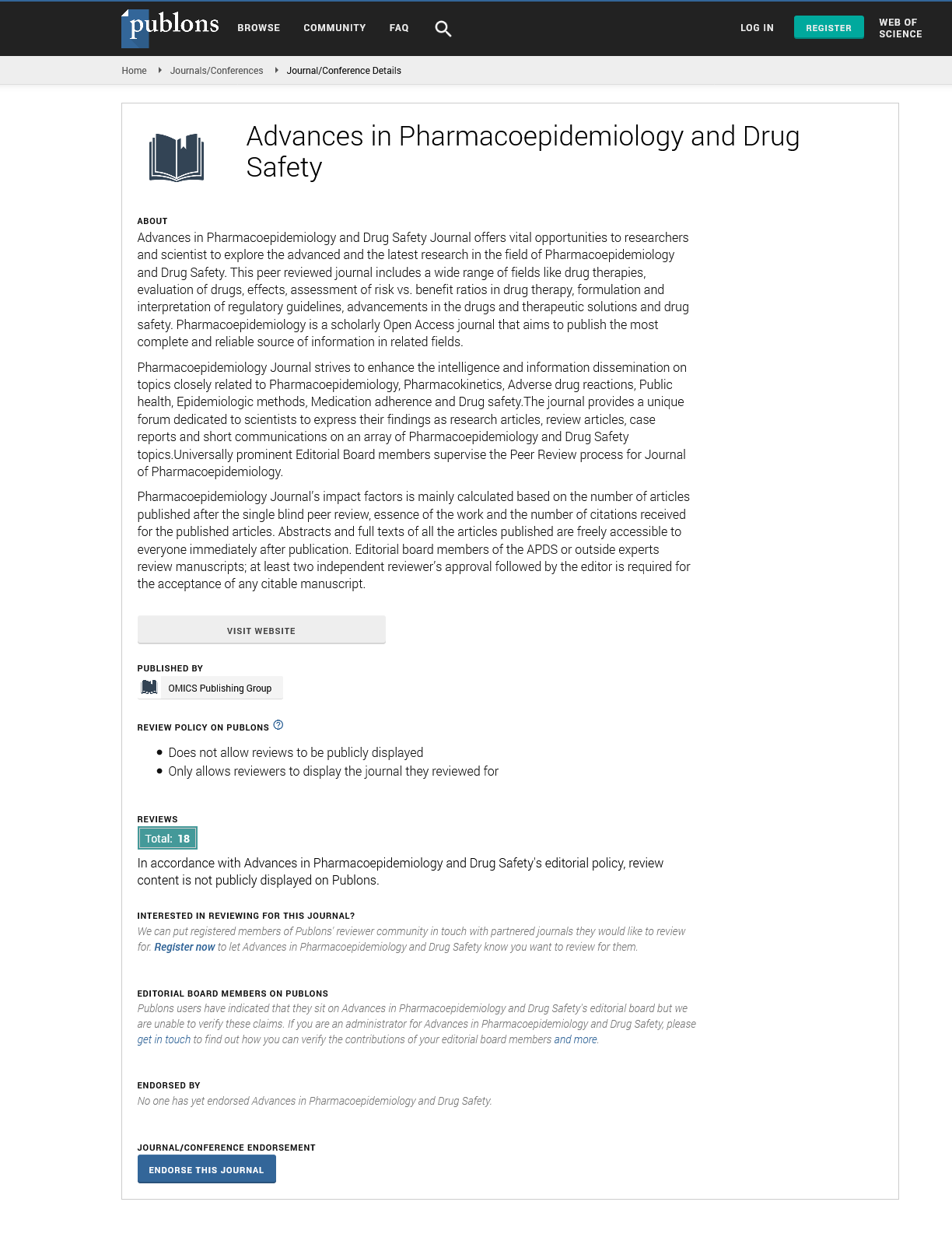Indexed In
- Open J Gate
- Genamics JournalSeek
- Academic Keys
- JournalTOCs
- RefSeek
- Hamdard University
- EBSCO A-Z
- SWB online catalog
- Publons
- Geneva Foundation for Medical Education and Research
- Euro Pub
- Google Scholar
Useful Links
Share This Page
Journal Flyer

Open Access Journals
- Agri and Aquaculture
- Biochemistry
- Bioinformatics & Systems Biology
- Business & Management
- Chemistry
- Clinical Sciences
- Engineering
- Food & Nutrition
- General Science
- Genetics & Molecular Biology
- Immunology & Microbiology
- Medical Sciences
- Neuroscience & Psychology
- Nursing & Health Care
- Pharmaceutical Sciences
Perspective - (2024) Volume 13, Issue 1
Exploring the Potential of Ultrasound in Precision Drug Delivery
Mark Lee*Received: 27-Feb-2024, Manuscript No. PDS-24-25486; Editor assigned: 29-Feb-2024, Pre QC No. PDS-24-25486 (PQ); Reviewed: 14-Mar-2024, QC No. PDS-24-25486; Revised: 21-Mar-2024, Manuscript No. PDS-24-25486 (R); Published: 28-Mar-2024, DOI: 10.35248/ 2167-1052.23.13.345
Description
Within the region of modern medicine, controlled drug delivery stands as a vital strategy, balancing therapeutic efficacy with minimized side effects. Among the developing methodologies, ultrasound-induced biophysical effects present a strong method for improving drug delivery systems. This article explores into the complex mechanisms essential to ultrasound-induced biophysical effects and investigates their potential to update drug delivery models.
Ultrasound induced biophysical effects
Ultrasound, operating beyond the spectrum of human auditory perception (>20 kHz), holds unique attributes that make it essential in drug delivery innovation. When combined with biological tissues, ultrasound waves cause a spectrum of biophysical phenomena, including micro-bubble formation, microstreaming, and sonoporation. Micro-bubble formation results in the formation, expansion, and subsequent collapse of gas-filled bubbles within a medium, inducing localized mechanical stresses. Microstreaming coordinates rapid fluid motion, enhancing mass transport and homogenization. Sonoporation coordinates the brief permeabilization of cell membranes, maintaining the approach of therapeutic agents.
Applications in controlled drug delivery
The composite of ultrasound with drug delivery systems indicates potential applications across various medical domains. In oncology, ultrasound-mediated drug delivery enables precision targeting of chemotherapeutic drugs to tumor parts, modifying systemic toxicity. Furthermore, the biophysical effects of ultrasound facilitate the movement of drugs through biological support like the Tight Junctions (TJs), which present novel methods for managing neurological diseases. Additionally, ultrasound-assisted delivery holds potential in gene therapy by raising the internalization of nucleic acids into cellular substrates, aiming for advances in genetic disorder management.
Challenges and future directions
Despite its potential, ultrasound-mediated drug delivery presents challenges necessitating complicated solutions. Advancement in ultrasound parameters-comprising frequency, intensity, and duration—is essential to optimize drug release efficacy while checking tissue detriment. Furthermore, transposing laboratory advances into clinical research mandates rigorous validation and testing. Future study aims to focus on developing complicated drug delivery platforms expert at controlling ultrasound-induced biophysical effects together with other modalities, such as nanotechnology and immunotherapy.
Expanding on applications in controlled drug delivery
Optimized dosage: Ultrasound holds the potential to expand the therapeutic possibilities of conventional drugs. By focusing ultrasound energy on specific tissues or organs, researchers can achieve localized drug release, thereby reducing the dosage required for therapeutic efficacy. This targeted approach minimizes systemic exposure to drugs, consequently reducing critical effects and improving patient observance.
Combination therapy: The integration of ultrasound with other therapeutic methods brings great prospects for combination therapy. For example, combining ultrasound with chemotherapy or immunotherapy can collectively enhance treatment outcomes. Ultrasound-induced biophysical effects can improve the penetration of therapeutic agents into tumor tissues, augment the cytotoxic effects of chemotherapy, or support the immune response caused by immunotherapy.
Non-invasive monitoring: Beyond drug delivery, ultrasound is a valuable tool for non-invasive monitoring of therapeutic responses. Ultrasound imaging techniques, such as contrastenhanced ultrasound and elastography, enable the actual visualization of drug distribution within tissues and the assessment of treatment efficacy. This non-invasive monitoring capability allows clinicians to customize treatment procedures based on individual patient responses, optimizing therapeutic outcomes.
Challenges and opportunities in translation
One of the primary challenges in translating ultrasound-mediated drug delivery from the results of studies done in the laboratory directly into new ways to treat patients is the regularity of standards. Variability in ultrasound equipment, operating parameters, and experimental conditions can significantly impact outcomes. Establishing standardized protocols and guidelines for ultrasound-mediated drug delivery studies is essential for ensuring reproducibility and similarity across preclinical and clinical investigations.
While ultrasound is generally considered safe for diagnostic purposes, concerns regarding its safety profile for therapeutic applications continue. Excessive exposure to high-intensity ultrasound may result in tissue heating, cavitation-induced damage, or other adverse effects. Therefore, ensuring the safety of ultrasound-mediated drug delivery approaches requires detailed attention to notable parameters, treatment duration, and tissue-specific considerations.
In conclusion, the combination of ultrasound-induced biophysical effects holds immense potential for advancing controlled drug delivery systems and transforming clinical practice. By controlling the unique capabilities of ultrasound waves, researchers can enhance drug targeting, improve therapeutic outcomes, and minimize critical effects. However, realizing the full potential of ultrasound-mediated drug delivery requires addressing fundamental challenges related to standardization, safety, clinical translation, and accessibility.
Citation: Lee M (2024) Exploring the Potential of Ultrasound in Precision Drug Delivery. Adv Pharmacoepidemiol Drug Saf. 13:345.
Copyright: © 2024 Lee M. This is an open-access article distributed under the terms of the Creative Commons Attribution License, which permits unrestricted use, distribution, and reproduction in any medium, provided the original author and source are credited.

